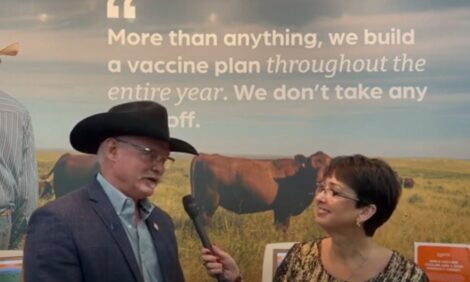



Risk Factors for the Transmission of FMD during the 2010 Outbreak in Japan: a Case–control Study
Looking at the spread of foot-and-mouth disease (FMD), researchers in Japan found that physical barriers helped to reduce the spread of infection in those areas where animal movements were forbidden. In shipment restriction areas, however, it was movements of people and vehicles that were most strongly associated with disease spread. Some differences were observed in the spread between farms with cattle or pigs.In 2010, foot-and-mouth disease (FMD) occurred for the first time in a decade in Japan. Movement or shipment of people and animals around infected farms was restricted; however these contingency measures proved insufficient to prevent FMD spread. Consequently, a total of 292 farms were confirmed as infected during this outbreak.
Norihiko Muroga from the National Institute of Animal Health and co-authors there and with the Ministry of Agriculture, Forestry and Fisheries and Miyazaki Livestock Hygiene Service Center conducted a case-control study to identify the risk factors associated with FMD transmission between farms during these restrictions.
As the control measures taken were not consistent between locations, risk factors were examined separately for two areas. Analyses were also performed separately for cattle and pig farms given their different infectivity and susceptibility.
Their study is reported in BMC Veterinary Research.
The researchers found that, for cattle farms in the movement restriction area, the odds of having the factor 'farm equipment was shared with other farms' was significantly higher for case farms than for control farms. For cattle farms in the shipment restriction area, the odds of having the factors 'feed transport vehicles visited the farm' and 'staff of livestock-related companies visited the farm' were significantly higher on case farms than control farms.
In pig farms in the movement restriction area, the odds of having factor 'farm staff commuted from outside' was 20 times higher for case farms than control farms. In addition, case farms were less likely to have the factors 'fattening farm' and 'barn has physical barriers' compared with control farms.
In the movement restriction area, the disease was likely to spread regardless of the movement of people and vehicles, and physical barriers were found to be a protective factor. Therefore, physical barriers from the surrounding environments seemed to prevent farms from being infected.
Conversely, in the shipment restriction area, movement of people and vehicles was strongly associated with disease spread.
Muroga and co-authors say their results allow a better understanding of the risk factors associated with FMD transmission and are useful to enhance future preventive measures against transmission during FMD outbreaks.
Reference
Muroga N., S. Kobayashi, T. Nishida, Y. Hayama, T. Kawano, T. Yamamoto and T. Tsutsui. 2013. Risk factors for the transmission of foot-and-mouth disease during the 2010 outbreak in Japan: a case–control study. BMC Veterinary Research. 9:150. doi:10.1186/1746-6148-9-150
Further Reading
You can view the full report by clicking here.
You can find out more about FMD by clicking here.
August 2013


